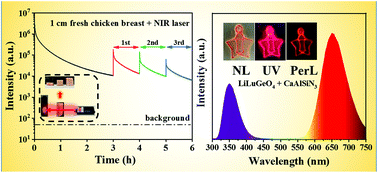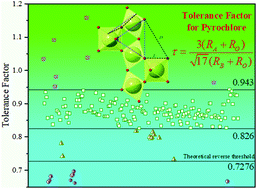Inorg. Chem. 2018, 57, 2, 609–616. https://doi.org/10.1021/acs.inorgchem.7b02431

A series of Eu2+-doped orthosilicate-orthophosphate solid-solution phosphors, KxBa1.97–x(Si1–xPx)O4:0.03Eu2+, have been synthesized via the conventional solid-state reaction. Using varying compositions, the lowest-energy excitation can be tuned from 470 to 405 nm, with an emission from 515 to 423 nm. We determined how chainlike cation polyhedra controlled excitation- and emission-band features by introducing in-chain characteristic length d22 and outside-chain characteristic length d12 and that there was a nearly linear relationship between the lowest-energy-excitation position and the ratio of d22 to d12. This influence of chainlike polyhedra on luminescence can be understood through the inductive effect. Luminescent thermal properties are improved remarkably by the cosubstitution of K+ and P5+ ions for Ba2+ and Si4+ ions with a T1/2 over 200 °C. We have established the host-referred-binding-energy (HRBE) and vacuum-referred-binding-energy (VRBE) schemes for the electronic structure of the series of lanthanide-doped phosphors according to the Dorenbos model and given a thermal-quenching mechanism for this series of phosphors inflatable cow.









